The Darwin Stalker

In 1836, Charles Darwin returned from his five-year voyage on the HMS Beagle. On his epic adventure, he visited South America, New Zealand, Australia, and observed many species of plant and animal that he and others had never seen before. In particular, his study of the natural forms found in the Galapagos Archipelago off the coast of Ecuador, and the coral formations in the Indian Ocean, were critical to his initial thoughts regarding evolution by natural selection. He noticed that different species tended to exist on opposing sides of natural barriers, such as barrier reefs or the channels between islands, and wondered how such a distribution came to be.
I just finished reading “Voyage of the Beagle”, his account of the trip. It’s part travel-diary, part scientific-journal, and it sold out pretty much immediately when it was published. I loved it for two reasons. Firstly, it was thrilling from a theoretical standpoint. There are some quotes where he comes so close to elucidating natural selection, to the point where you want to reach into the pages and nudge him positively in the right direction. For example, he muses on the Galapagos Islands:
“… there is even a difference between the inhabitants of different islands; yet all show a marked relationship with those of America, though separated from that continent by an open space of ocean… considering the small size of these islands, we feel all the more astonished at their number of aboriginal beings… hence, in both space and time, we seem to be brought somewhat near to that great fact - that mystery of mysteries - the first appearance of new beings on this earth.”
And when measuring the different beak sizes of finches on different islands:
“Seeing this gradation and diversity of structure… one might really fancy that from an original paucity of birds in this archipelago, one species had been taken and modified for different ends.”
A little bit of encouragement is all it would take to show him that he was on the right track; that natural barriers were the reason that different selection pressures created different species, independently of one another, by natural selection! But it would take some considerable thinking outside of the box to get there, since even the idea that the earth was more than a few thousand years old was relatively new. In fact, Darwin fancied himself a bit of a geologist on the excursion, observing of the Cordillera mountain range in Chile:
“We spent a day on the summit, and I never enjoyed one more thoroughly… Who can avoid wondering at the force which has upheaved these mountains, and even more so at the countless ages which it must have been required, to have broken through, removed and levelled whole masses of them?”
It’s almost like you can hear the battle raging inside his head, his Christian word-of-the-bible upbringing against his scientific curiosity and inquisitive nature. Of course, Darwin was right, about both geology and natural selection, but the specifics wouldn’t be ironed out until later in his life.
There’s a second reason I enjoyed reading Voyage. A few months ago, I myself was in South America, with my buddy Martin. Before going, I wasn’t aware that Darwin travelled anywhere except the famous Galapagos Archipelago. But now, having read the book, it seems that I have inadvertently stalked him around the globe!
One of the first places on his adventure was Rio de Janeiro in Brazil. He stayed in a bay called Botofogo, overlooking the water, a part of town he seemed to quite enjoy:
“It was impossible to wish for anything more delightful than thus to spend some weeks in so magnificent a country… Everyone has heard of the beauty of the scenery near Botofogo.”
We thought so too. Here’s me checking out the very same scenery, a short walk away from our Botofogo Bay hostel:
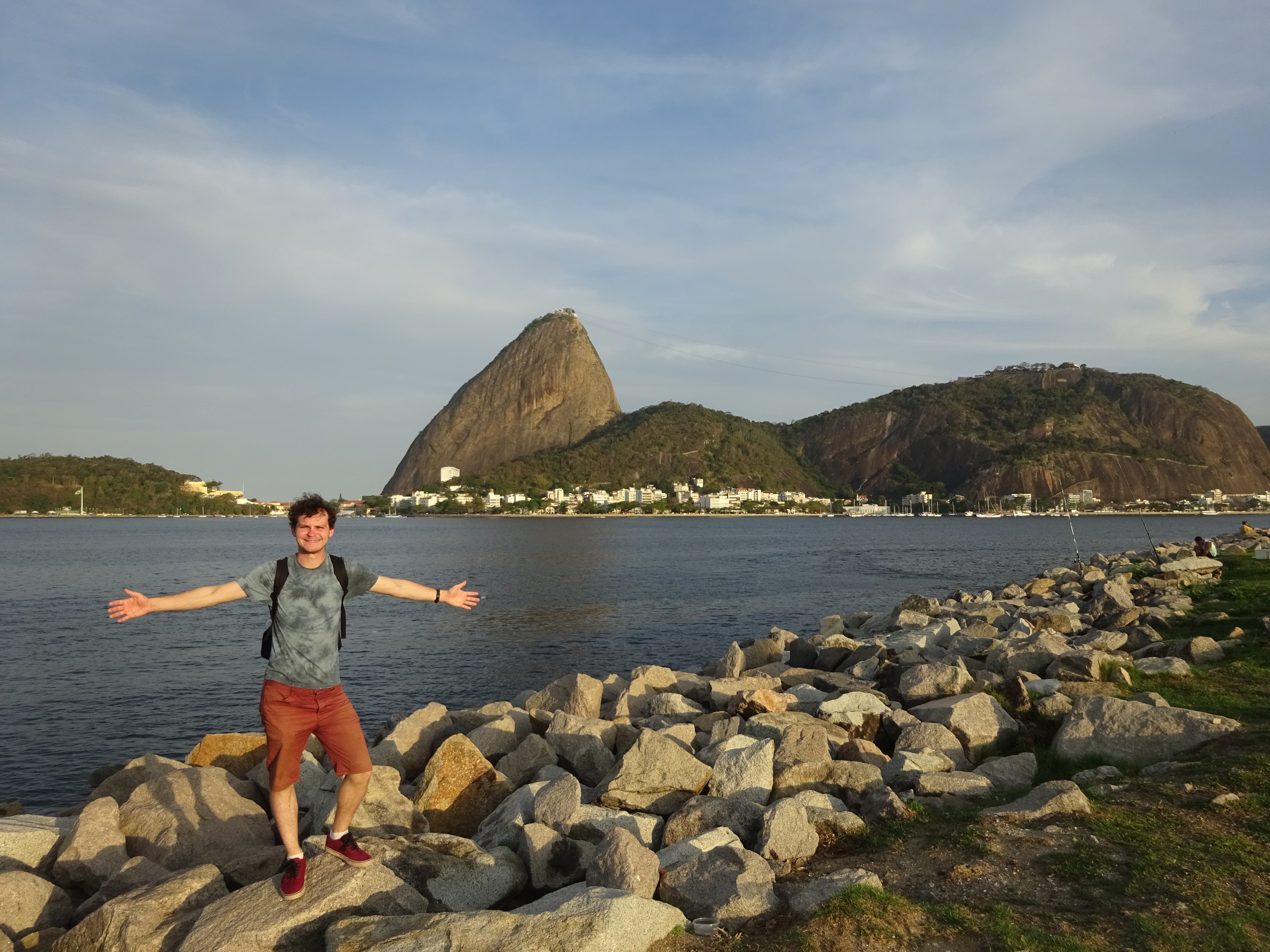
Darwin also comments on Corcovado, the grand conical mountain overlooking the city, upon which sits the famous Christ the Redeemer (built after Darwin’s time in 1931):
“The house in which I lived was seated close beneath the well-known mountain of the Corcovado… I was often interested by watching the clouds, which rolling from seaward, formed a bank just beneath the highest point… a cloud sometimes appears fixed on the mountain summit, while the wind continues to blow over it.”
It seems like not much has changed meteorologically in the past 200 years then, since we had first-hand experience of those damn clouds:
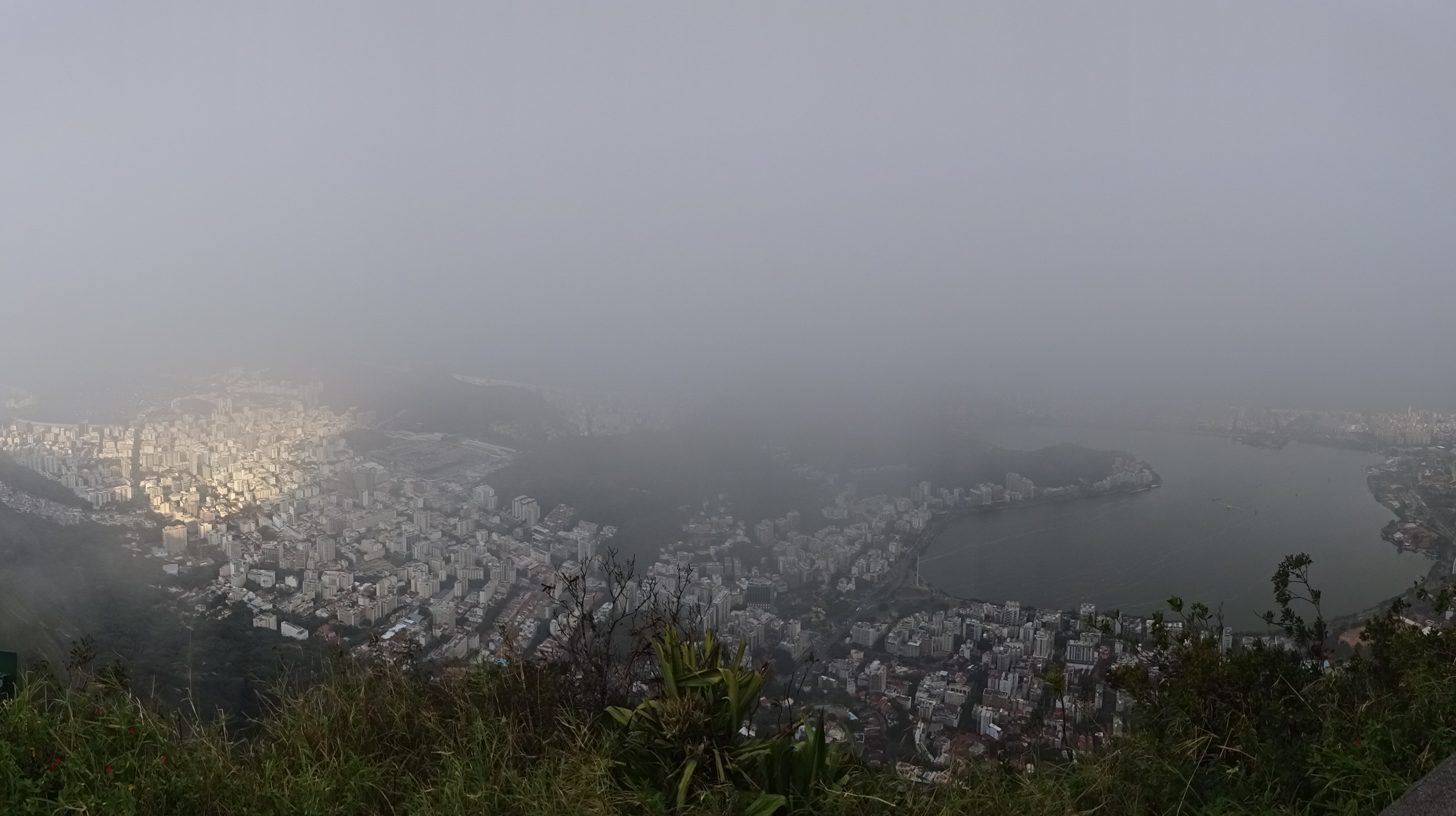
One of the next stops for Darwin (and the previous stop for us; we did things in reverse order) was the capital of Argentina, Buenos Aires. We arrived there after witnessing the magnificent Iguazu Falls, right on the inland border between Brazil, Argentina and Paraguay, but this was somewhere Darwin never visited: a shame, I think he would have liked it. But Darwin wasn’t too fond of Buenos Aires, saying of the main city square:
“In the centre of the town is the Plaza, where the public offices, fortress, cathedral stand… The general assemblage of buildings possesses considerable architectural beauty, although none individually can boast of any.”
A bit harsh, to be honest. I thought the pink palace was rather cute:
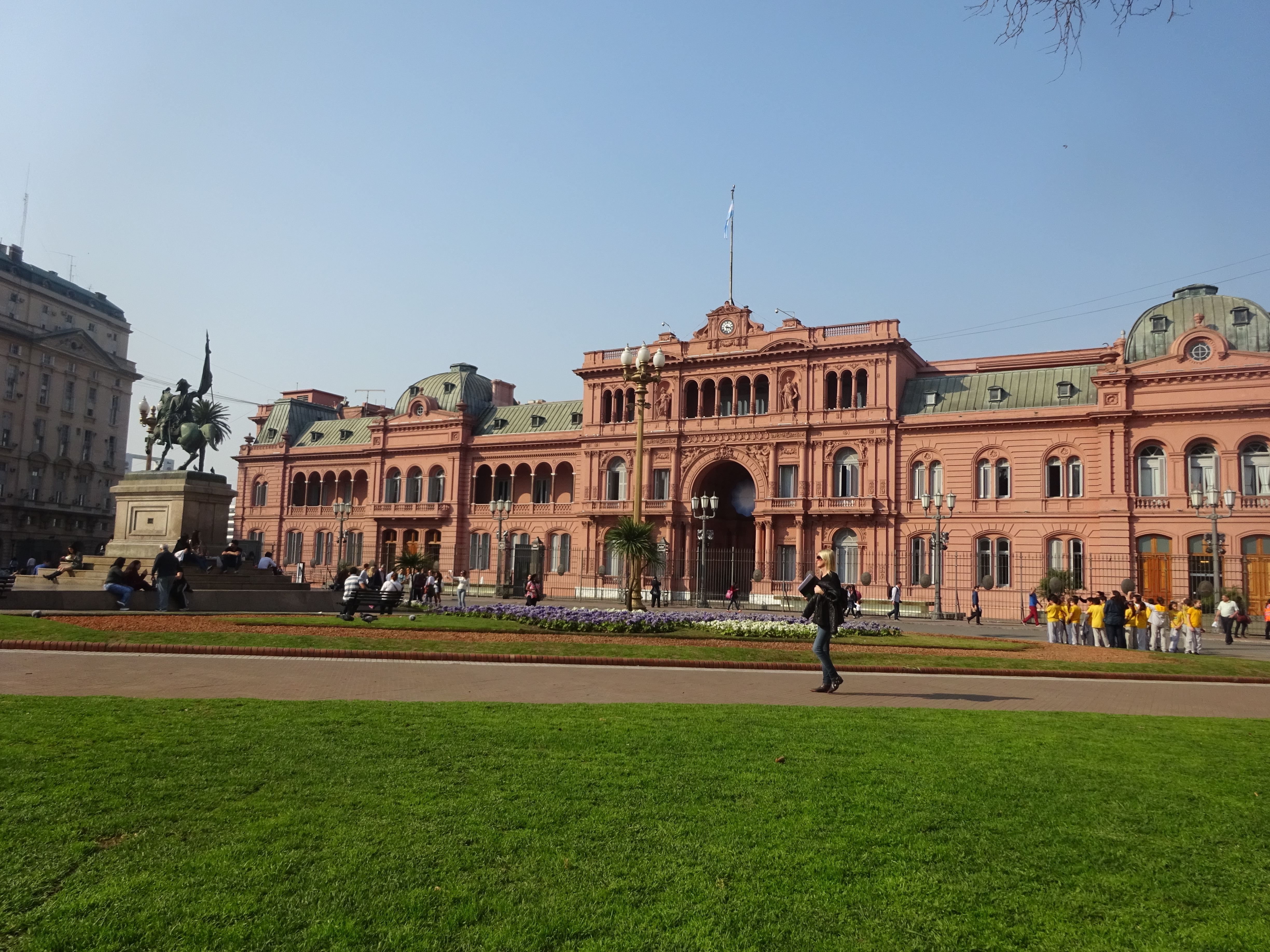
To be fair, Buenos Aires was home to a violent revolution during his stay, which probably tainted him impression somewhat, though we too saw our fair share of political activism in the city when we visited (I think it’s a pretty common occurrence!).
It’s now that we split paths with Darwin and go our separate ways. He sailed with the Beagle all away around the outside of the continent, down to Patagonia and Tierra del Fuego, where he had some incredible-sounding adventures with local Fuegians (“savages”), and then up to Chile; here, he visited some local islands, and experienced a huge earthquake in Concepcion. All in all, it took them a while - about half a year - to traverse the southern part of South America, and to reach Valparaiso, the main port of central Chile. This is where we meet again! The route we took was a bit of a shortcut, cutting across Argentina instead of heading any further south (too cold for the time of year we were there). We travelled through Mendoza on the way, which I’ll mention soon.
Darwin didn’t write much about Valparaiso, but it seems that he liked it, marvelling at “its picturesque appearance”. I do have to agree; Valparaiso was one of the last stops on our Chilean road trip, and we wanted to stay so much longer!
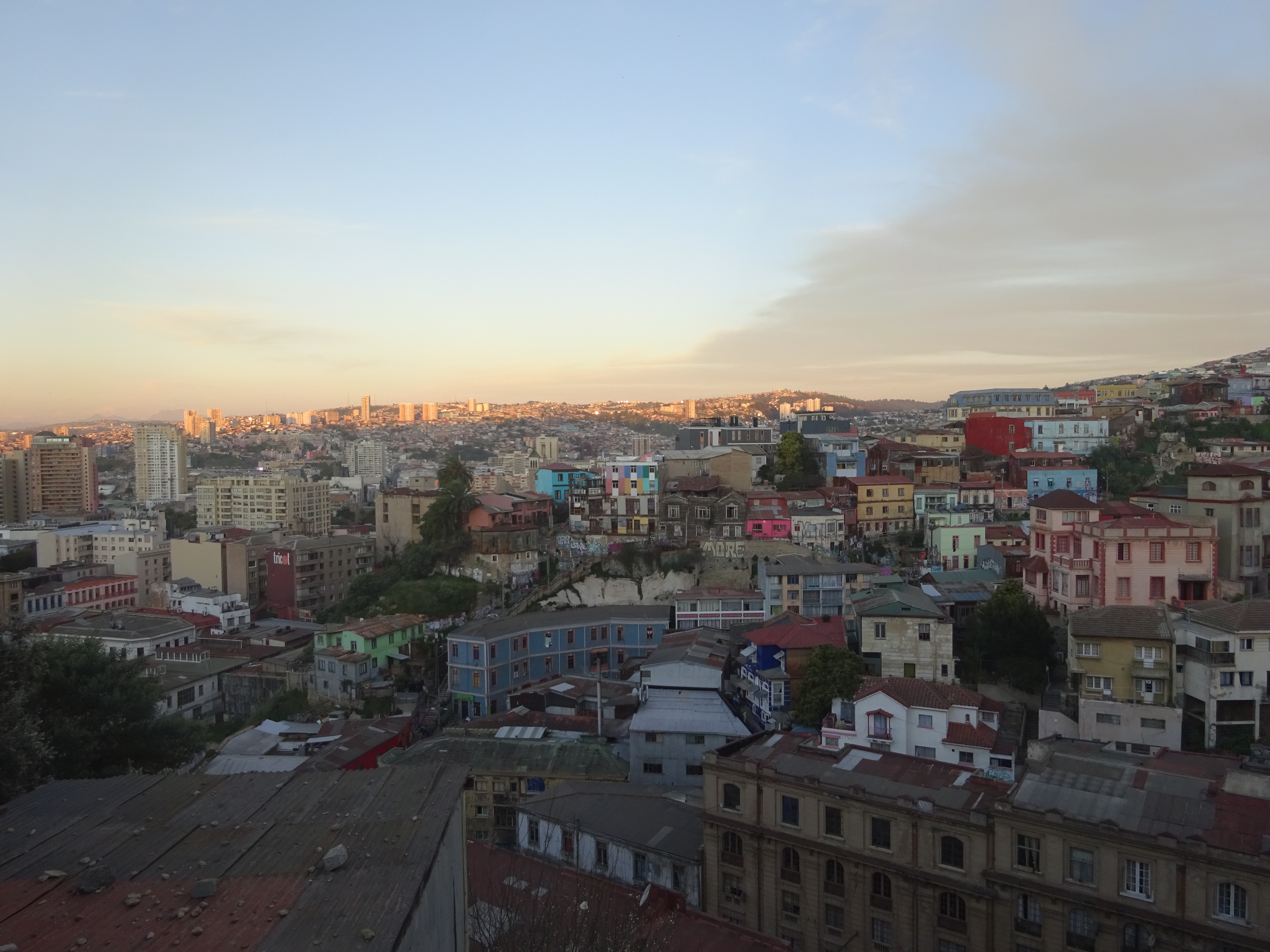
This is an interesting part of the story however, because Chile is where Darwin’s adventure and ours most overlaps. There are two parts to this. This first is as follows: from Valparaiso, he decided to travel across the Cordillera to Mendoza in Argentina, and I’m pretty certain he took the exact same route that we did. To begin the journey, we all travelled inland to Santiago, the capital of Chile. Here, Darwin comments:
“I stayed a week in Santiago, and enjoyed myself very much… A never-failing source of pleasure was to ascend the little hillock of rock … which projects in the middle of the city. The scenery certainly is most striking…”
When exploring Santiago, Martin and I too found ourselves drawn to the hill in the centre of the city. It offered a fantastic viewpoint of the surrounding buzz and the Cordillera beyond:
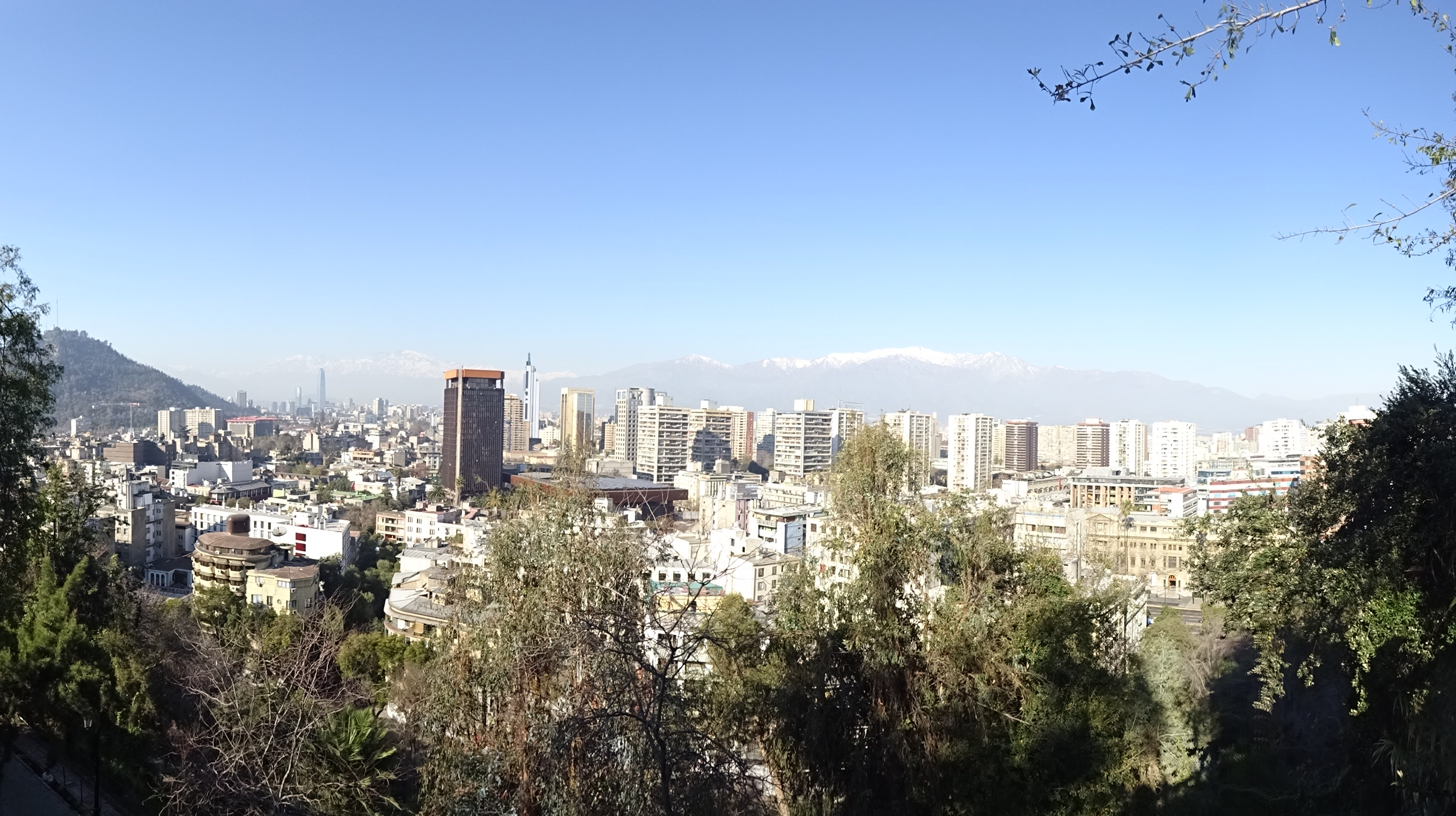
From here, our goal was Mendoza. The best way across the mountain range is via the Paso Internacional Los Libertadores (or as Darwin calls it, the Portillo Pass). And so, Darwin describes the route across the mountains, mentioning a specific road that his party embarked on.
“We set out early in the morning (21st), and continued to follow the course of the river… The road, which as yet had been good with a steady but very gradual ascent, now changed into a steep zigzag track up the great range, dividing the republics of Chile and Mendoza.”
I am certain he is talking about the exact same road that our bus took to traverse the pass. We don’t have any firsthand photos of the view of the pass from our bus (we had recently finished our road trip and were exhausted), but here’s a photo of it from Wikipedia:
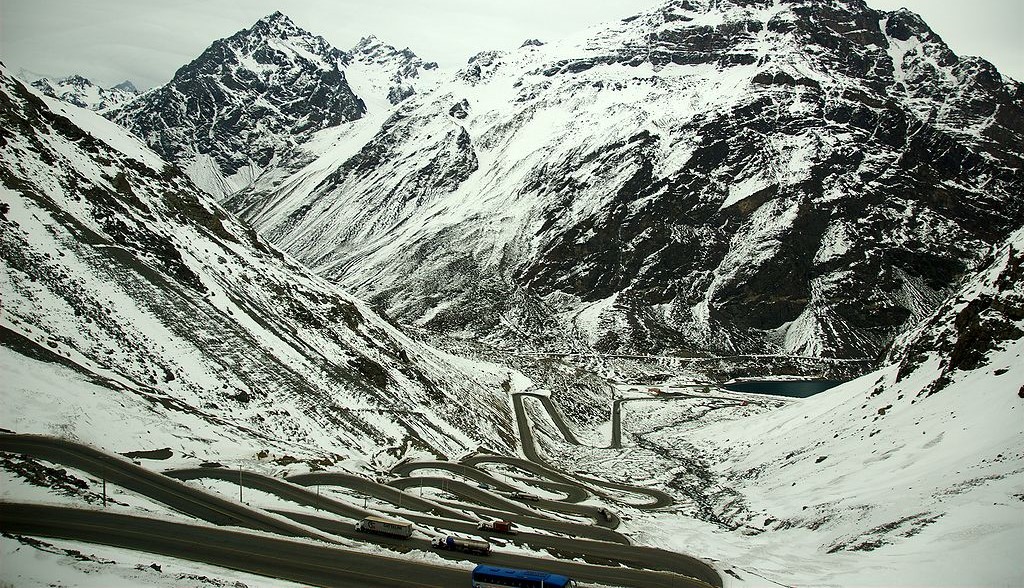
Staggeringly beautiful, right? One of the most amazing bus rides of my life. And that’s got to be the switchback (“steep zigzag”) he’s talking about! When I read that, it struck me how easy we had it compared to Darwin. While we were lying back comfortably in our semi-cama bus seats, he was making that journey on horseback. It makes one appreciate the ease with which anyone can travel vast distances in the modern age.
Once on the Argentinian side of the pass, Darwin wasn’t impressed with Mendoza. Funnily, he called it a “stupid, forlorn town”. We were only there for a few hours, so not enough to get a full impression, but it seemed pretty and relaxed. Like many places, I wish we’d had longer to explore.
From Mendoza, we headed to Buenos Aires, and Darwin travelled back over into Chile via a different pass. This is where the second part of the overlap comes in. His next goal was to head, via land, as far North in Chile as he could go. This was the opposite route to the one Martin and I had roadtripped ourselves, before reaching Valparaiso in the first place.
Darwin’s first stop was the small fishing town of Coquimbo.
“We reached Coquimbo, where we stayed a few days. The town is remarkable for nothing but its extreme quietness. It is said to contain from 6000 to 8000 inhabitants.”
I’m surprised he didn’t comment on the many birds that feed on the fish brought in by the fisherman, or the sea-lions skulking around on the beach. Perhaps they were not around 200 years ago:
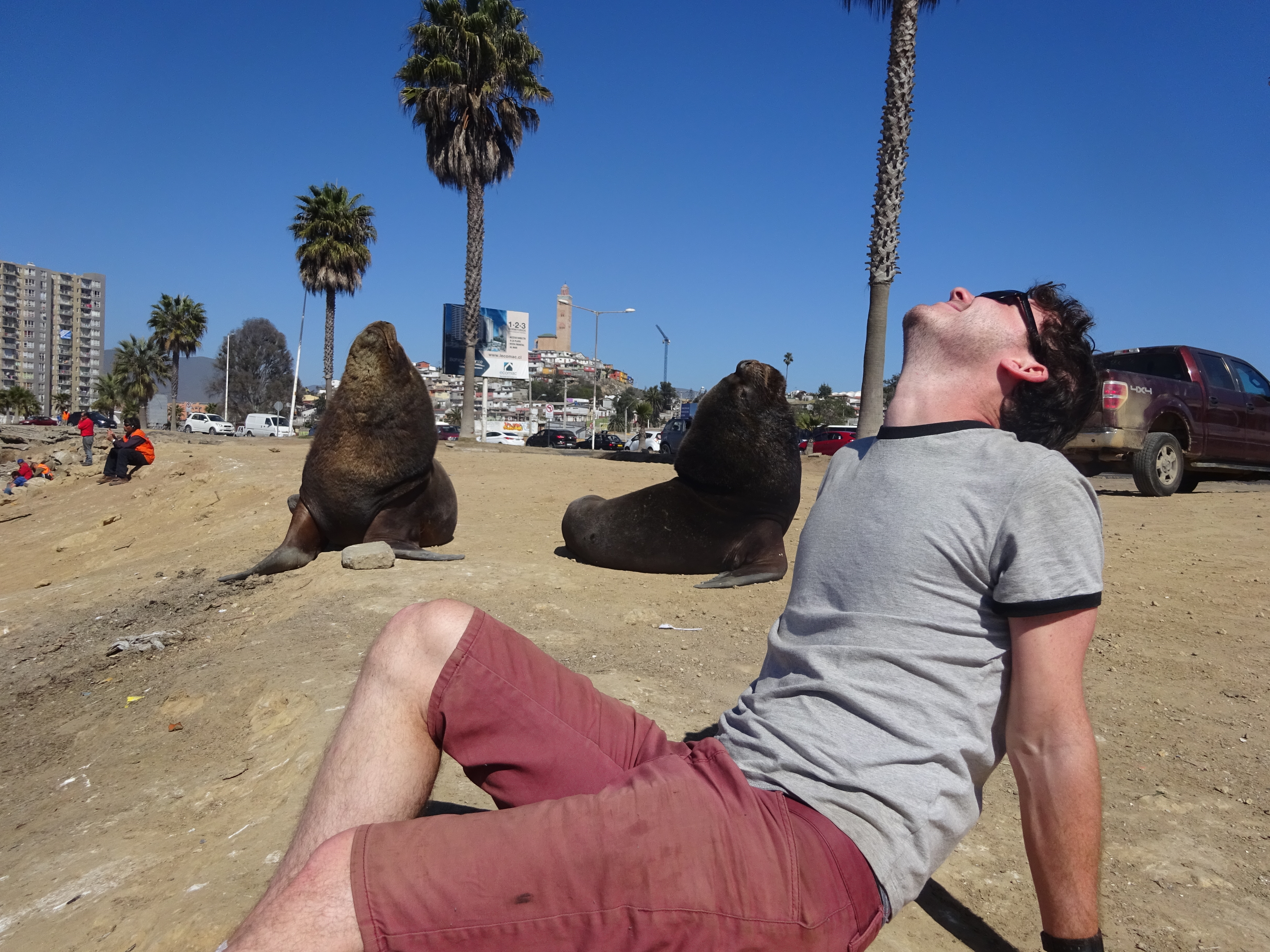
This is also near the entrance to one of the most beautiful places I’ve ever been, the Elqui Valley. Darwin visited here too, commenting on how rich and fertile the valley appeared.
“… the valley was beautifully cultivated, and the whole scenery very grand. We were here near the main Cordillera, and the surrounding hills were lofty… The figs and grapes of this district are famous for their excellence, and are cultivated to a great extent. This valley is, perhaps, the most productive one north of Quillota.”
This, I think, was my favourite place in Chile. It was definitely the best driving I’ve ever done in my life. Darwin was right; the Elqui Valley boasts a covert beauty, one which encompasses you when you’re inside:
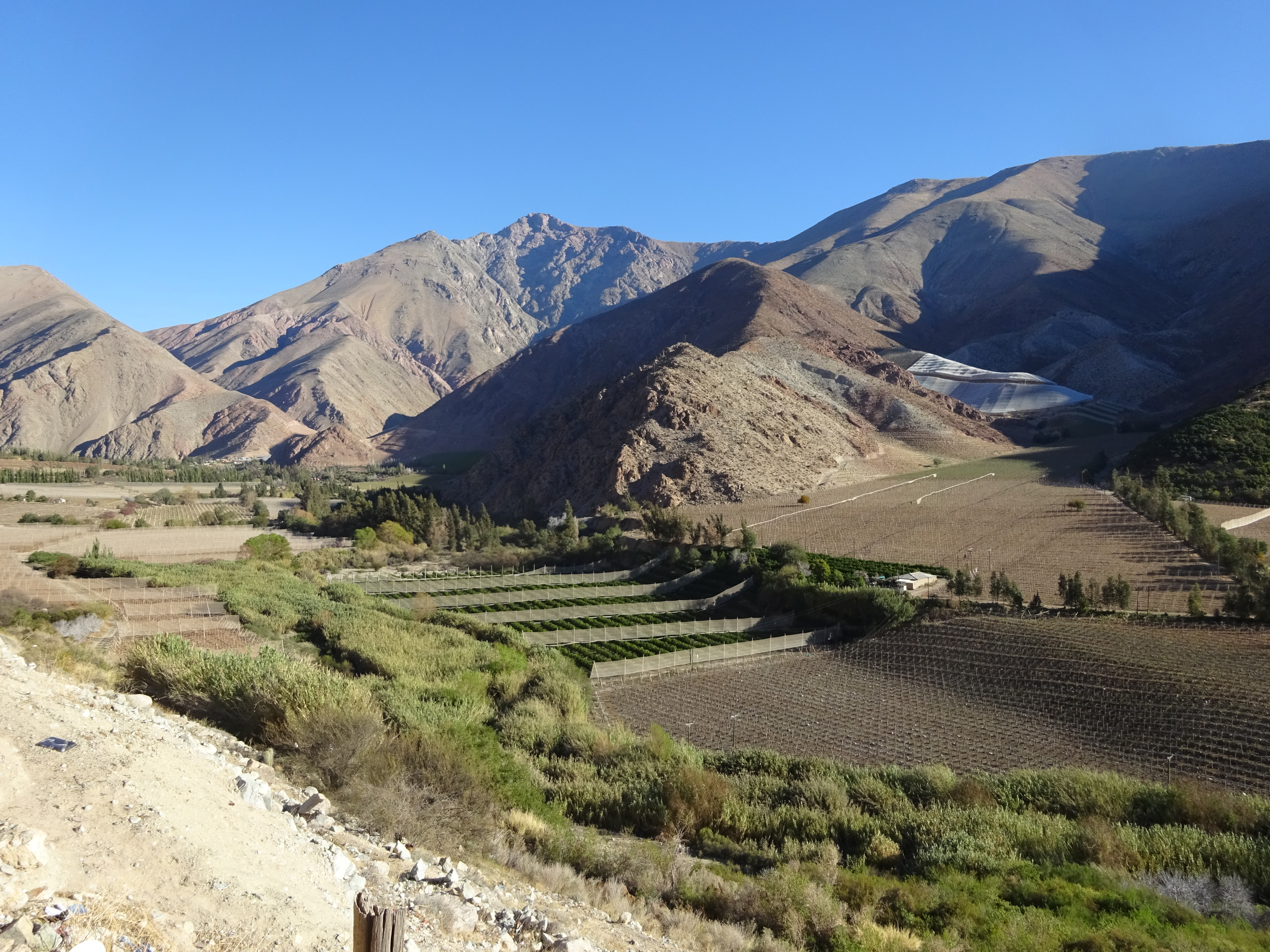
Sleeping rough in this valley was perhaps the highlight of my road trip. Because this is a semi-desert, a gradation of the more northern Atacama, the air is always dry and clear. Darwin noted the constant “unclouded sky”, and I have no doubt that he too enjoyed the view of the stars at night.
Once back at Coquimbo, Darwin continued up the coast to Huasco. This town sits at the mouth of another valley, in which water streams down from the Cordillera on the other side of the thin country. We didn’t visit Huasco specifically, but did dip into the valley after reaching the inland town of Vallenar. Here, we snapped the most glorious sunset:
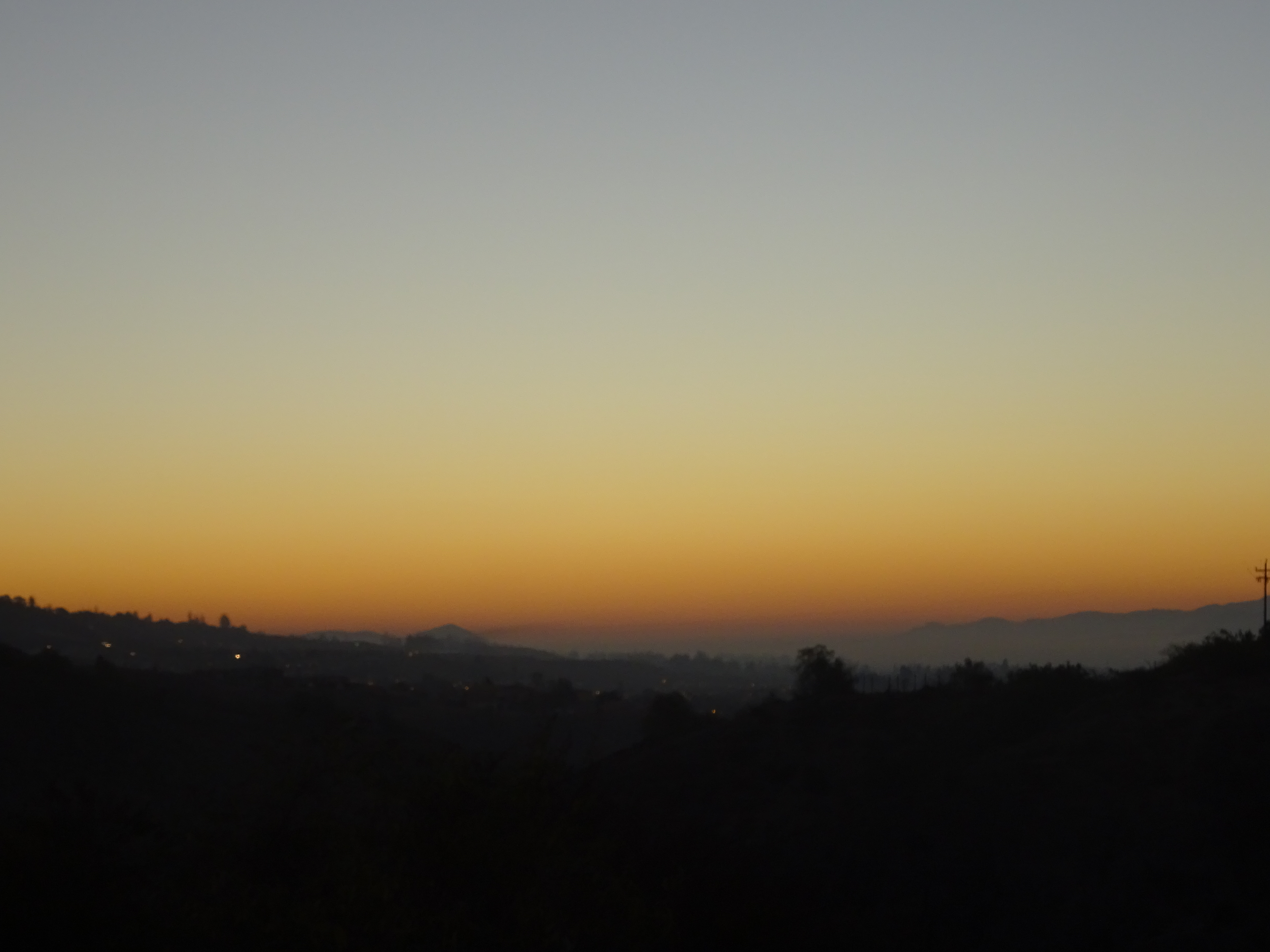
Further north of this point, the scenery becomes more and more barren, heading towards the Atacama. Darwin’s journey took many weeks, and he became sick of the uninteresting lack of vegetation.
“We rode all day over an uninteresting country. I am tired of repeating the epithets barren and sterile. These words, however, as commonly used, are comparative; I have always applied them to the plains of Patagonia, which can boast of spiny bushes and some tufts of grass; and this is absolute fertility, as compared with northern Chile.”
He’s not wrong:
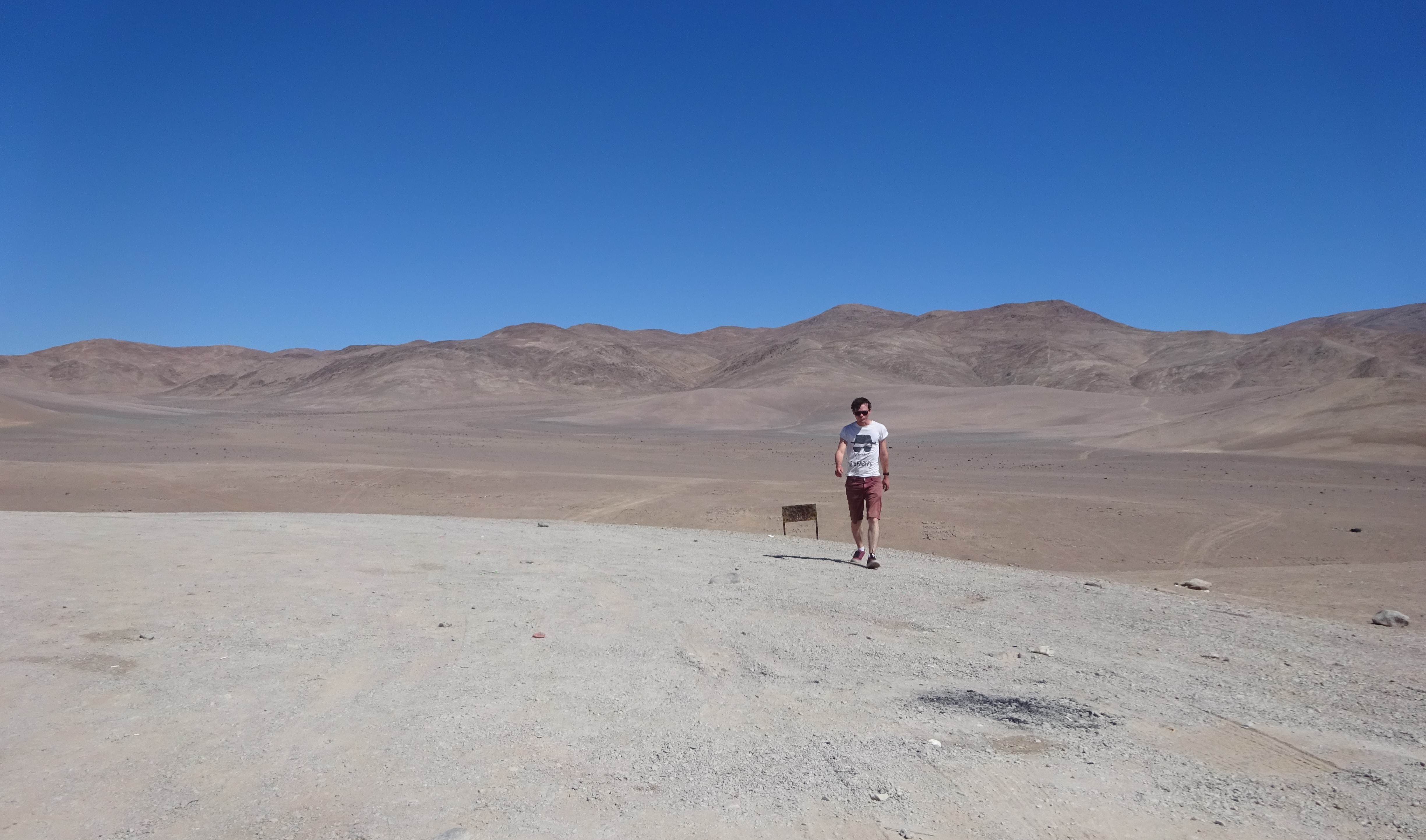
I feel like we actually had it the better way round. Travelling south from the desert, we got to see the vegetation gradually increase and the scenery become more colourful and exciting as we drove. I can imagine that watching that same vegetation disappear into dust must have been pretty depressing for Darwin the naturalist.
Instead of attempting to cross the Atacama on horseback (“a barrier far worse than the most turbulent ocean”), Darwin hopped back on the Beagle to travel to Iquique and then on to Lima. Interestingly, Iquique, which in Darwin’s day belonged to Peru, now is within the border of Chile, after the War of the Pacific (late 1800s). But Darwin really did not take to Lima when he arrived.
“The city of Lima is now in a wretched state of decay: the streets are nearly unpaved; and heaps of filth are piled up in all directions, where the black gallinazos, tame as poultry, pick up bits of carrion…Lima, the City of the Kings, must formerly have been a splendid town.”
I have to admit, I did think the same. The coast was constantly cloudy, there weren’t a huge amount of sights to see… though I didn’t see any carrion lying around. Its one redeeming feature: THEY HAD A CAT PARK.
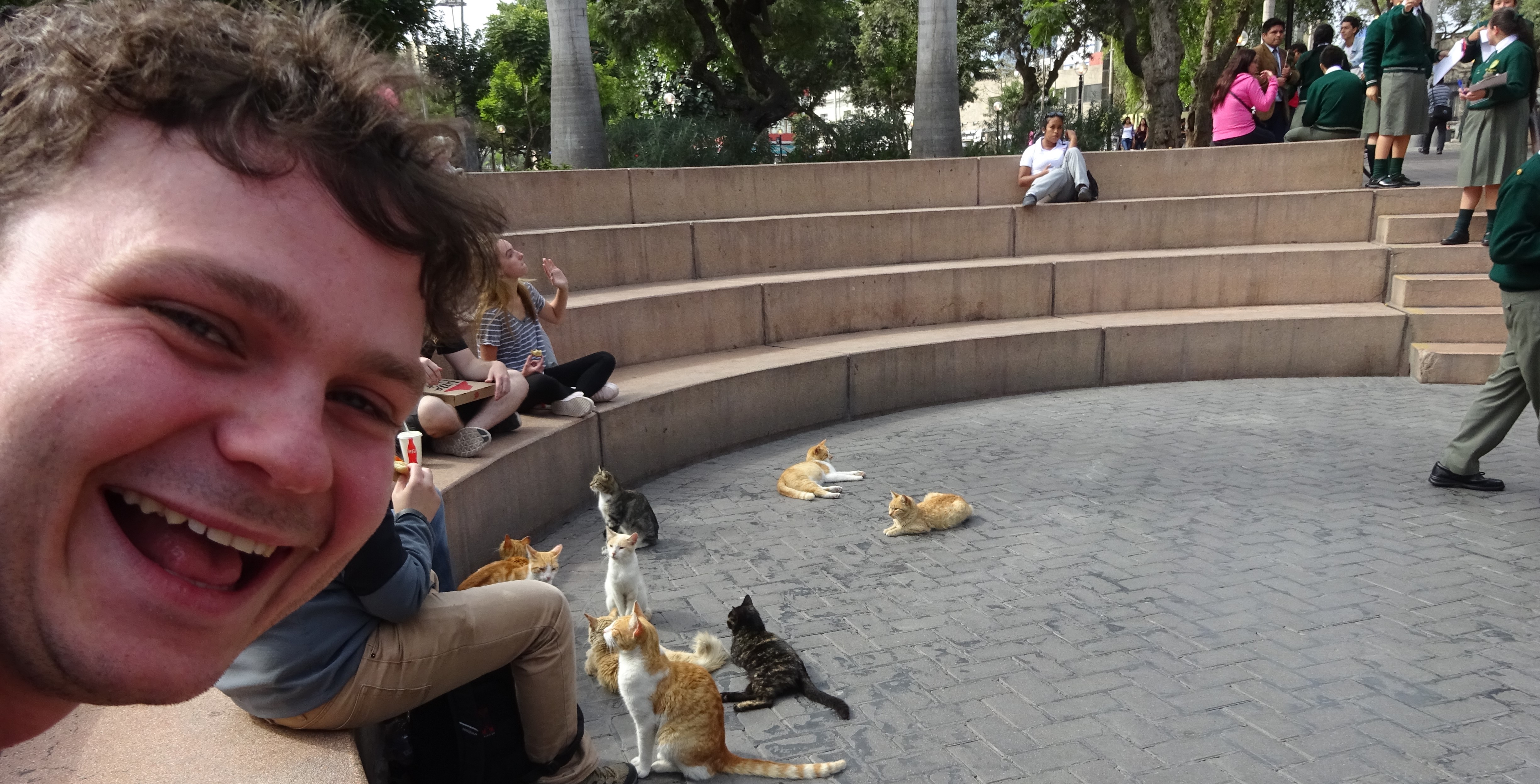
The rest of Peru was incredible, and I think Darwin would have thought the same if he’d explored more. Machu Picchu wasn’t discovered until 1911 though, so there may not have been much reason to venture inland. And anyway, Darwin was eager to travel to the Galapagos.
That’s all the overlap between our South America trip and the Beagle’s adventure. However, Darwin visited one more place that I’ve been before: Sydney, Australia. He anchored there on January 12th 1836.
“In the evening I walked through the town, and returned full of admiration at the whole scene. It is a most magnificent testimony to the power of the British nation… My first feeling was to congratulate myself that I was born an Englishman… It may be faithfully compared to the large suburbs which stretch out from London and a few other great towns in England…”
I visited Sydney back in 2012, and I remember thinking the same thing. It feels very much like a cross between an American and English city. But obviously, Darwin missed some of the great sights that the city now has to offer, like the Opera House and Harbour Bridge. Plus, it was one of the most extravagant New Year’s firework displays I’ve ever seen.
Anyway, that’s all I wanted to say. If this has post has been TLDR, the basic take-home is this: Voyage of the Beagle is an awesome book, read it if you ever get a chance. Darwin ends the book by concluding:
“But I have too deeply enjoyed the voyage, not to recommend any naturalist… He may feel assured, he will meet with no difficulties or dangers, excepting in rare cases, nearly so bad as he beforehand anticipates… the effect ought to be, to teach him good-humoured patience, freedom from selfishness, the habit of acting for himself, and of making the best of every occurrence… he will discover, how many truly kind-hearted people there are, with whom he never before had, or ever again will have any further communication, who yet are ready to offer him the most disinterested assistance.”
I wholeheartedly agree. If travelling taught me anything, it’s that humans worldwide are generally friendly and willing to help strangers. We met so many people who extended their kindness indiscriminately towards us. It really bolstered my trust in people. The amount of times that things could have gone seriously wrong for us (I’m thinking specifically of our Chilean road trip) - we would have been screwed if it wasn’t for helpful locals.
Darwin’s trip took him five years. We managed to travel a large proportion of that same distance, in merely three months. Travel is significantly easier today, and so I want to do much much more of it while I can. Thanks for reading!